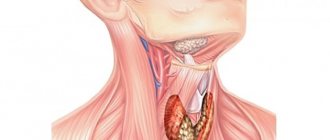In this case, we will not talk about the feeling of heat and chills in cases of infectious diseases or other purely somatic diseases. We describe situations when feelings of heat and chills appear for no reason, or rather in cases where there are no obvious somatic or infectious diseases, when doctors cannot or are confused in determining the state of the body during examination.
If you feel a feeling of heat or a feeling of chills without any obvious reasons, so-called “Hot flashes” occur, and doctors cannot establish the correct diagnosis, the treatment they prescribe is not effective, then we are talking about the presence of some kind of breakdown of nervous activity and you worth contacting us.
Brain Clinic specialists have extensive experience in treating various disorders of nervous activity that cause sensations of heat and/or chills, “hot flashes”. Our doctors will be able to correctly and safely restore the body’s functioning without any side or negative effects on it.
Call
We help in the most severe cases, even if previous treatment did not help.
| Initial consultation and examination 2,500 | Treatment and rehabilitation therapy from 5000 |
Objective grounds
Itching is a sensation accompanied by the need to scratch the skin. There are several opinions about its occurrence:
- irritation of certain pain receptors;
- occurs independently under the influence of mediators - histamine, serotonin, adrenaline, opioids and others.
The second theory is supported by the fact that itching sensations appear only in the superficial layers of the dermis and the mucous membranes adjacent to it, while pain occurs anywhere in the body. In addition, pain and itching can occur in isolation from each other.
Itching can be localized or spread throughout the body. Due to its occurrence, it is divided into:
- propriocevtive - appears due to a violation of the structure of the dermis;
- neuropathic – observed when the nervous system is damaged;
- neurogenic – without damage to the NS;
- psychogenic – mental disorders.
All types of symptoms differ in intensity, duration and place of occurrence.
Itching of the skin of the body often has objective causes and accompanies any disease. First of all, these include skin diseases :
| Type of disease | Cause | Why does it itch? | Localization of sensations |
| Dermatitis | Nervous stress, exposure to cold, allergens | Small rashes, peeling of the dermis. | Any part of the body |
| Dermatophytosis | Fungus | The vital activity of fungi in the upper layers of the skin | Scalp, smooth skin |
| Lichen | Fungi and viruses against the background of reduced immunity | Peeling of the epidermis | Scalp |
| Pediculosis | Lice | Parasite bite | Head, pubis |
| Psoriasis | It is not completely clear. Presumably: low immunity, heredity, infections | Dry, scaly rashes | Elbows, head, lower back, genital mucosa |
| Scabies | Mite | Parasite bite and blisters. Accompanied by severe itching, which intensifies in the evening | Interdigital area |
| Xerosis | Infections, hepatitis, liver cirrhosis, kidney disease | Coarsening and peeling of the skin | Any parts of the body |
| Neurodermatitis | Stress, allergies, hormonal and digestive disorders | Damage to the top layer of skin | Neck, skin folds, bends of knees, elbows |
Another skin condition that causes "scabies" is eczema . It is believed that it occurs against the background of reduced immunity. It can be triggered by stress, nervous tension, as well as hormonal imbalances and allergic reactions.
Eczema is characterized by the formation of foci of rashes in the form of “wet” blisters and pimples, and in some cases dry ones. The itching in this condition is simply unbearable; it is the main symptom of the pathology. The elements are localized on the neck, head, flexor surfaces of the elbows, ankles and knees.
The skin may itch if there are diseases of the internal organs :
- Kidney - a symptom manifests itself on the skin and in the genital area.
- Liver - spreads to the face and hands, while the skin turns yellow.
- Thyroid – dry, flaky and itchy skin on the hands and face.
- Anemia.
- Diabetes – the skin and mucous membranes of the genital organs begin to itch due to increased blood glucose levels.
- Oncological diseases.
- Hormonal disorders - menopause, pregnancy, menstrual syndrome.
- Viral infections - herpes, AIDS.
- Dehydration.
Causes of fever
Fever is the result of the body's immune response to pathogenic bacteria and foreign microorganisms. Among them: viruses, bacteria, fungi, drugs or other toxins.
These substances are considered fever-producing substances (called pyrogens) and trigger the body's immune response. Pyrogens activate the hypothalamus in the brain to increase body temperature to help the body fight infection.
A fever occurs when an area in the brain called the hypothalamus—also known as the body's "thermostat"—shifts the maintenance of normal temperature upward. The person may feel cold and may add layers of clothing or wrap themselves in a blanket and may shiver to provide more heat to the body, ultimately leading to an elevated temperature (fever).
Normal values vary throughout the day - they are lower in the morning and higher in the afternoon and evening. Although most people consider 36.6°C normal, a healthy person's body temperature can range from about 36.1°C to 37.2°C - this is considered normal.
The fever itself is not contagious, but if the cause of such a symptom is viruses and bacteria, then a healthy person can acquire the disease itself.
Best materials of the month
- Coronaviruses: SARS-CoV-2 (COVID-19)
- Antibiotics for the prevention and treatment of COVID-19: how effective are they?
- The most common "office" diseases
- Does vodka kill coronavirus?
- How to stay alive on our roads?
Fever or elevated body temperature can be caused by: viral and bacterial infections, as well as the diseases they lead to; heat stroke; certain inflammatory conditions such as rheumatoid arthritis, an inflammation of the joints; malignant tumor; certain medicines (antibiotics and medicines used to treat high blood pressure or seizures); neurotic condition - thermoneurosis.
Sometimes the cause of the fever is not identified. If a patient has a fever for more than three weeks and the doctor cannot find a cause after extensive evaluation, the diagnosis is “fever of unknown origin.”
Burning sensation and its origin
A burning sensation in the body and limbs manifests itself in the form of tingling, a sensation of heat. It is constantly present throughout the day or has a wave-like character, but, as a rule, does not bother you at night.
The appearance of this symptom is facilitated by damage to the peripheral nerves. This is observed, for example, in diabetes mellitus . In this case, the burning sensation is concentrated primarily in the extremities, followed by tingling and numbness.
Sciatica is an inflammation of the sciatic nerve, accompanied by a burning sensation in the legs up to the foot.
With multiple sclerosis, the burning sensation is combined with tingling. Such an alliance extends to the limbs. One should be wary of their simultaneous occurrence with problems of speech and coordination.
Radiculopathy is damage to the nerve roots of the spinal nerves. In this case, a pathological feeling of heat also occurs in the arms and legs.
Dangerous is the appearance of a burning sensation in one half of the body. Along with other signs, such as unclear speech, headache, blurred vision, delirium, hallucinations, it can be a sign of a stroke .
Heat in the legs often indicates vascular pathology .
Other conditions that can cause this sensation include:
- spider and snake bites;
- poisoning by chemical compounds;
- avitaminosis;
- calcium deficiency;
- burns.
Particular discomfort is caused by itching and burning in a woman’s intimate area (vagina, vulva and perineum).
A burning sensation in the vagina, along with dryness, are manifestations
of menopausal changes or atrophic inflammation . If the cause of the burning sensation is various kinds of discharge, then this indicates candidiasis, inflammatory processes or sexually transmitted diseases .
Moderate itching in the vaginal area may indicate an allergic reaction to latex or medications. The discussed symptoms in the vulva (external genitalia) also appear against the background of sexually transmitted infections . Other reasons may be:
- lice;
- eczema and mycoses;
- tumor-like formations;
- helminthic infestations;
- kidney and liver diseases.
The perineum includes the area around the genitals and anus. The occurrence of unpleasant sensations in it indicates the presence of such conditions :
- helminthic infestations;
- allergy to powder or linen;
- haemorrhoids;
- rectal tumors;
- systemic diseases;
- sexual infections;
- herpes, candida;
- incorrect hygienic approach.
When should you see a doctor?
A fever in itself cannot be a cause of alarm or a reason to call a doctor. However, there are some circumstances when you should still seek medical help.
Fever in children
Unexplained fever is a greater cause of concern in infants and children than in adults. You need to contact your local pediatrician if your child:
- is less than three months of age and has a rectal temperature of 38°C or higher;
- between 3 and 6 months of age and has a rectal temperature of 38.9°C or higher and appears unusually irritable or drowsy;
- between 6 and 24 months of age and has a rectal temperature greater than 38.9°C that lasts longer than one day but does not show any other symptoms.
If your baby also has other signs and symptoms, such as a cold, cough or diarrhea, you should call the doctor at the first sign of illness before serious complications arise.
If the child is active and the body temperature varies around 37 degrees Celsius, it is important to provide him with adequate nutrition and plenty of fluids. The reason for this kind of temperature change can be various factors: emotional and physical stress, stress, etc.
You need to call your doctor urgently if your child:
- lethargic and irritable, repeatedly vomiting, severe headache, abdominal pain, or any other symptoms causing significant discomfort;
- has a fever after prolonged exposure to the sun or in a very warm room (overheating is suspected);
- stays with a high body temperature for more than three days;
- refuses to eat, refuses to play, and does not want to come into contact with anyone.
It is important to closely monitor the child’s condition during the period of fever, since this symptom may demonstrate the presence of serious diseases, pathologies or inflammatory processes in the body.
Psychogenic nature of burning and itching
The term “psychosomatics” is quite common these days. It is defined as the occurrence of bodily manifestations based on psychological factors.
If during the examination of the patient it is not possible to find objective reasons causing such impressions, the matter is most likely in the mental sphere of the person. Or rather, in its negative manifestations.
For example, itching and burning sensations in the body develop against the background of a stressful situation . If it was a one-time problem, then after it is eliminated, the unpleasant manifestations also disappear.
As for chronic stress , these symptoms may persist or even intensify. This, in turn, increases nervous tension and aggravates the situation. It turns out to be a vicious circle.
There is an understandable explanation for the appearance of skin paresthesias in psychological disorders. With negative emotions, the body increases the production of serotonin and dopamine. It is these neurotransmitters that provoke the occurrence of itching and burning, usually without visible skin elements. But sometimes a rash, dryness and peeling may appear.
Senestopathies
Burning, itchy feelings provoked by mental disorders are classified as simple thermal senestopathies.
Senestopathies are a variety of unpleasant, intrusive and exhausting impressions that are concentrated on the surface or inside the body. This concept was first learned about in 1907 thanks to the scientists P. Camus and Dupre.
The peculiarity of this condition from true burning and itching is the rich and elaborate way of describing them. For example, “there is a fire in the head”, “the chest is on fire”. The localization is characterized by an unusual presentation: “itching in the stomach area”, “a vessel in the abdomen is pulsating”.
Such episodes can be isolated, constant or paroxysmal. Sometimes they are so intrusive that they literally drive the patient crazy.
Their characteristic feature is tactile hallucinations. They often manifest themselves in terms of itching and tingling. A person claims that bugs or mites are crawling under his skin. In some cases, he even sees them, or it seems to him that crumbs or sand are stuck to his body.
Such hallucinations provoke obsessive actions. The patient persistently visits doctors or tries to get rid of intrusive parasites on his own: he constantly washes himself and disinfects his body.
Mental disorders that lead to similar senestopathies:
- hypochondria;
- neuroses and depression;
- psychoses and psychopathy;
- oneiroid;
- paranoia;
- affective and delusional disorders, etc.
Itchy and “hot” sensations in neuroses
Neurosis is a psychogenic nervous disorder associated with emotional, behavioral and somatovegetative disorders. What distinguishes it from other mental illnesses is that the patient is fully aware of the severity of his condition and strives to get rid of it.
A distinction is made between mental and physical neurosis. Physical neurosis, along with psychogenic disorders, also has physical symptoms. There are several varieties of it.
Skin neurosis is manifested by burning and itching of the skin against the background of its bluish, marbled tint. The skin of the joints and legs becomes rough and tightens.
This condition is characterized by changes in sensitivity. It can be reduced or, conversely, increased when unpleasant sensations appear at the slightest touch. With physical neurosis, the skin itches and “burns” in certain areas or throughout the body, becomes wet or dry. Tactile hallucinations are characteristic.
The patient is so bothered by these manifestations that he scratches his body until it bleeds, leaving wounds and abrasions.
The reasons for this condition are:
- mental and physical stress;
- stress;
- conflict situations;
- brain injuries;
- hormonal disorders;
- infections.
Muscular neurosis . This condition is preceded by physical overexertion, as well as prolonged monotonous activity.
The disease is accompanied by a burning sensation throughout the body or in certain areas against a background of muscle tension and spasms. Another characteristic symptom is pain in the chest, neck and face.
Neurosis of the genital organs . The main manifestations of this syndrome are itching and burning in the genital area, which occur after sexual intercourse, during the menstrual period and for a number of other reasons.
The culprits of the disease are:
- mental infantility;
- chronic fatigue;
- conflicts in the family.
Types of fever
Fever can be classified depending on how long the condition lasts and what temperature range it is associated with.
Temperature can be classified according to the following phenomena:
- hypothermia – up to 35 degrees Celsius;
- normal – from 35 to 37 degrees Celsius;
- hyperthermia - an increase in temperature above 37 degrees Celsius;
- fever – an increase in body temperature above 38 degrees Celsius with preservation of thermoregulation.
The height of the temperature can help indicate what type of problem is causing it. Temperature varies over time:
- acute type – duration up to 7 days;
- sub-acute – duration up to 14 days;
- chronic or permanent – lasting more than 14 days.
Fevers that persist for days or weeks without explanation are called “of unknown origin.”
Other mental and nervous disorders
It is worth noting that these unpleasant sensations in the intimate area also appear with other types of neurosis.
Here is a case described in psychotherapeutic practice. A young woman aged 22 went to a psychiatric hospital. Because of this, their sexual and marital life is destroyed, the couple is on the verge of divorce.
During the survey, it was found that the girl got married at the insistence of relatives at the age of 19. And her husband is 18 years older than her. She developed normally, and at the time of coming to the center she was physically healthy, including gynecologically.
Conclusion: hysterical psychopathy , a symptom of hysterical genitalgia. This symptom developed due to the girl’s negative attitude towards her husband and sex life in general. Pain and burning in the vagina in this case act as an unconscious pathological adaptation mechanism for avoiding sexual intimacy with the husband. The symptom was eliminated with the help of hypnosis, but the dislike of sexual relations remained.
Thus, in this situation, a burning sensation in the intimate area became a manifestation of exclusively mental disorders, despite physical health.
Vegetative-vascular dystonia can also be accompanied by sensations of heat and itching in the body. The reason for this is an imbalance in the functioning of the nervous system. This disorder leads to changes in cardiac activity, which is why the condition is often accompanied by a burning sensation in the chest. It is accompanied by other symptoms such as arrhythmia, shortness of breath, heart pain, pressure surges, dizziness and loss of consciousness.
Types of thermometers
For infants and preschool children, it is recommended to use safer thermometric devices: rectal, forehead, electronic, infrared. The most popular and accessible are rectal ones.
Rectal thermometers
Algorithm for using a rectal thermometer for infants:
- Apply oil cream (vaseline or regular sunflower oil) to the head of the device.
- Place the baby on his stomach.
- Carefully insert the head of the thermometer into the child's anus 1-2 centimeters.
- Hold the thermometer and the child for another three minutes.
Important: do not let go of the thermometer while it is inside the child. If your baby squirms, the device may go deeper and cause injury.
Ear thermometer
An ear thermometer is one of the safest variations of an infrared thermometer.
The device must be correctly installed in the child's ear to obtain the most accurate readings. Too much earwax can cause inaccurate results.
Temperature measurements using an ear thermometer are not accurate in young children and should not be used on children under 3 years of age (36 months). This is especially true in children under 3 months of age, when obtaining an accurate temperature is very important.
Electronic (oral) thermometer
Patients 4 years of age and older can take their temperature with an electronic thermometer under the tongue with the mouth closed.
Usage algorithm:
- Clean the thermometer with soapy water or wipe with alcohol and rinse thoroughly.
- Turn on and place its tip as close to your tongue as possible.
- The mouth should remain closed, as an open mouth may cause inaccurate readings.
- The thermometer should remain in place for about a minute or until you hear a beep. Check the numbers.
Important: Avoid hot or cold drinks for 15 minutes before the procedure to ensure correct readings.
What can itching and feeling of heat in the body lead to?
These symptoms are so uncomfortable that it is simply impossible to ignore them. All attention is concentrated on them, which is why a person becomes inattentive, absent-minded, disruptions appear in his professional activities, and his performance decreases.
Irritability and tension reach a peak state. Depression and nervous breakdowns are possible. Such overexertion leads to mental imbalance. The patient's sleep is disturbed and insomnia develops. As a result, during the day he feels exhausted and sleep-deprived.
Severe itching in the intimate area sometimes leads sufferers to the point that they use various objects that injure the mucous membrane and skin in this area.
Scratches on the skin and mucous membranes can become infected, inflamed and suppurate, spreading the process to larger areas.
Symptoms of low-grade fever
In some cases, a rise in temperature to 37 can be caused by weather, diet, stress and other minor changes, in others it is a symptom of disease. Look out for the following signs:
- the temperature systematically rises and falls over several days for no apparent reason;
- you do not have ARVI or exacerbation of chronic diseases, there is no pain, runny nose, cough or other symptoms of disease;
- you have not been immunized or taken new medications;
- there were no shocks associated with stress, you eat well and get enough sleep.
If all the criteria are met, and the temperature continues to remain above 37 °C, this is a reason to consult a therapist. Especially if you notice in yourself:
- neoplasms (nodules) on the skin;
- swollen lymph nodes;
- bruises that appeared from nowhere;
- severe loss of appetite;
- rash;
- muscle joint pain;
- problems with the gastrointestinal tract.
The doctor will examine your medical history and complaints, and then prescribe the necessary tests and examinations.
Causes of low-grade fever
An examination by a specialist is necessary because an elevated temperature can be a sign of a wide range of illnesses, ranging from minor to very serious. Thus, a temperature of 37–38 °C is typical for:
- overheating of the body (due to hot weather, inappropriate clothing, in a bath or sauna), heat stroke;
- teething in infants (in this case the temperature rises to higher levels, which is normal);
- vaccinations (the body's natural immune response);
- side effects from certain medications.
You can read the continuation of the article by following the link to RBC Style.








